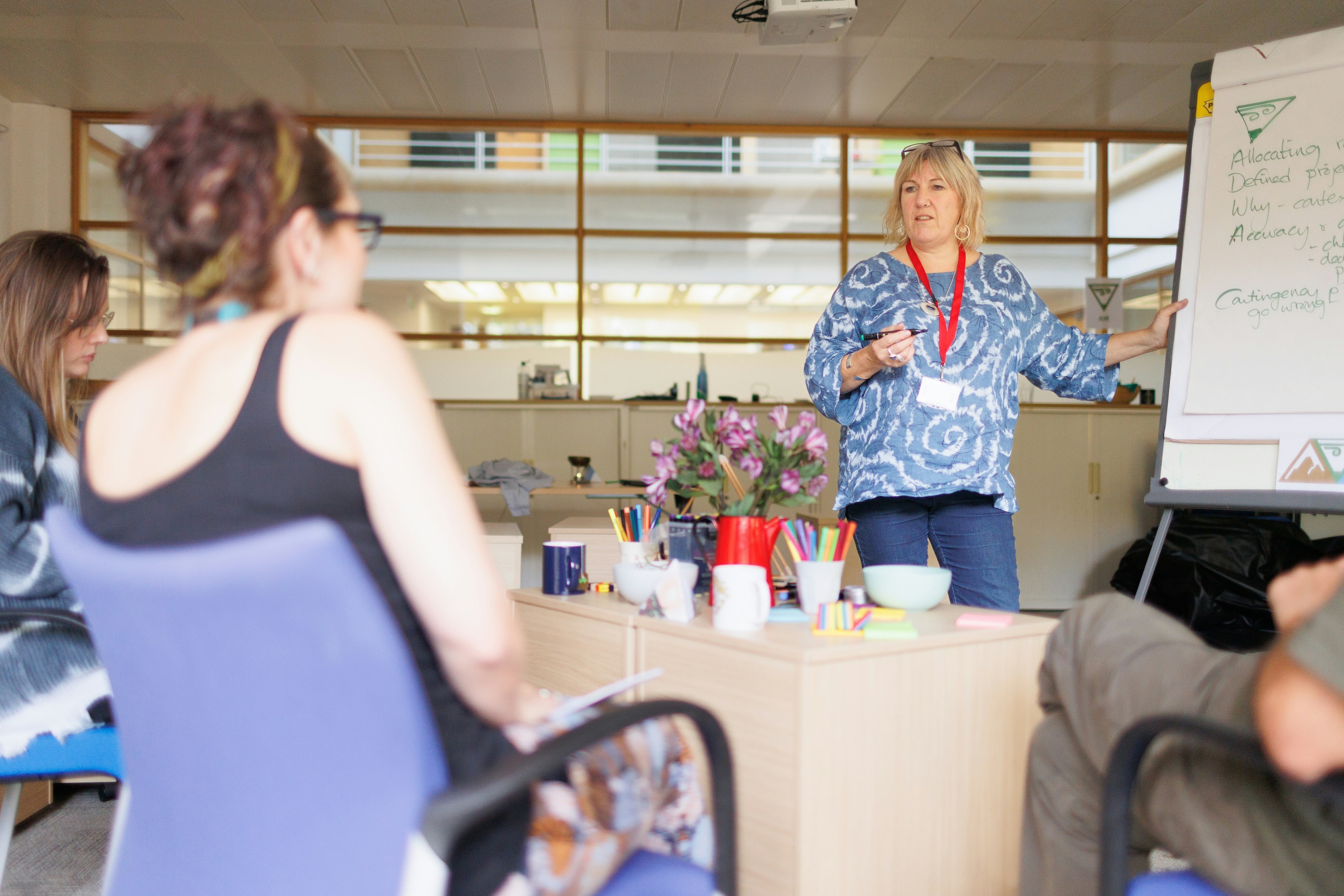10 ways countries can improve their competitiveness

Stay up to date:
Innovation
For more than 30 years the World Economic Forum has studied and benchmarked competitiveness, widely accepted as the key driver for sustaining prosperity and improving the well-being of a nation’s citizens.
Now the Forum is building a competitiveness repository to showcase examples of successful competitiveness programmes that rely on public-private collaboration. Here are 10 examples from around the world.
Austria: TheKPlus Competence Centre Programme, jointly funded by government and private enterprise, was created in the late 1990s in recognition of the increasing importance of science-based innovation for the Austrian economy. Its aim was to encourage pre-competitive research with a high potential for commercial application.
Annual funding of between €2.2 million and €4.4 million is awarded for four or more years to consortia composed of research institutions and a minimum of five industrial partners. Their research proposals must be of a high scientific and technological quality, they must be able to cluster scientific and economic competence into a critical mass, and their work must have the potential to bring an economic benefit to Austrian companies. There are currently 285 companies collaborating with research institutions in 18 KPlus centres.
The programme has been successful in bringing the private and public sectors closer to accelerate the creation of knowledge and in helping Austria to achieve its national R&D intensity target of 3%, surpassing many of its neighbours.
India: The Infrastructure Leasing & Financial Services Ltd (IL&FS Skills) was founded in 2007 by a major infrastructure company as a for-profit venture to address the national skills gap by training young people from rural areas in 16 strategic sectors. IL&FS Skills uses a public-private partnership model to work closely with 1,000 partner companies and the state-funded National Skill Development Corporation. It operates institutes in 24 of India’s 28 states.
The institutes follow an industry-recognized curriculum to ensure trainees are ready for employment, which in many cases is pre-guaranteed by partner firms. To date, 100,000 students have been trained in 18 “hub” skill schools and 355 “spoke” skill centres, with 85% successfully employed.
Netherlands:The Leading Technological Institutes programme was launched by the government in 1997 in recognition that innovation was being stifled by inadequate collaboration between academia and industry. The state funds up to 50% of the cost of the mainly virtual institutes, which bring together public research organizations with industrial partners who define the programmes, ensuring research is in line with the long-term needs of the private sector.
Outcomes have included 892 publications in peer-reviewed journals, 33 patent applications and six spin-offs. There are currently nine institutes and the government has now made the programme the model for its new innovation initiative, Topconsortia for Knowledge and Innovation (TKI). Nineteen TKIs are being formed, with a total budget of €500 million by 2015 and a minimum private share of 40%.
Sweden:The Agency for Higher Vocational Education was formed in 2009 after it was recognized that a lack of vocational programmes was starving employers of skilled workers and creating a major barrier to economic growth.
Public and private organizations apply to the agency once a year for approval and funding to provide vocational education. Grants are given to those whose programmes match existing demand for professional qualifications. Each year the agency spends approximately $275 million. In 2012, 40,000 students were enrolled in 1,000 HVE programmes.
The private sector contributes about $69 million in value a year, through contributions such as tutors, equipment and material, and by facilitating workplace training.
A recent survey showed that 9 out of 10 students were employed or self-employed one year after completing their studies, with 62% employed in work related to their programme.
Chile: Start-Up Chile was founded in 2010 as part of a strategy to free Chile from its reliance on traditional industries such as mining, and to transform the country into the innovation and entrepreneurship hub of Latin America. Its goal is to attract the world’s best and brightest entrepreneurs and boost the number and quality of start-ups in the country.
With an average annual budget to fund start-ups of $11 million, Start-Up Chile offers 100 spots in the programme each year. It receives more than 1,500 global applications each time. Selected start-ups each receive one-year work visas, $40,000 and access to a community of more than 800 start-ups ready to work collaboratively. So far more than 750 companies and 1,500 entrepreneurs have come to the country under the scheme.
Funded by CORFO, the country’s main economic development agency, the programme is also supported by companies such as Telefonica, which offer work space, internet and other facilities.
The programme is succeeding in bringing about internal cultural change, creating more Chilean entrepreneurs – 40% of the most recent applications were from Chilean firms – and increasing collaboration between universities and entrepreneurs.
European Union: The European Innovation Partnerships (EIPs) is one of a series of European Commission initiatives launched in 2010 to improve conditions and finance for research and innovation, and ensure that innovative ideas can be turned into products and services that respond to major social challenges and create growth and jobs.
EIPs develop strategic plans, accelerate the process of innovation and bridge the gap between breakthroughs, such as R&D results and prototypes, and their commercialization and use. So far five have been launched, focusing on active and healthy ageing, agricultural sustainability and productivity, smart cities and communities, water and raw materials.
Private partners take part in governance and implementation. They contribute to the work of the partnership by employing their own resources, and benefit from the opportunity to influence future legislation, standards and procurements, and to gain access to larger markets.
Finland: VIGO, a venture accelerator programme, was launched in 2009 in response to “the Finnish paradox” – the fact that, despite strong innovation and institutional capacity, the country has had few high-growth start-ups.
The programme brings together innovative but inexperienced start-ups with seasoned entrepreneurs, who form accelerator teams of three or four experts to coach up to 10 companies in which they have invested their own money. Each start-up has access to €2 million in government grants to pay the accelerator team for its services. Since its launch, accelerator teams have attracted a total of €200 million in funding for their 60 target companies.
Morocco: EFE-Maroc is an affiliate of Education for Employment, a network of NGOs that creates economic opportunity for unemployed young people in Egypt, Jordan, Morocco, Palestine, Tunisia and Yemen, by working with overseas partners to provide world-class professional and technical training that leads directly to jobs and entrepreneurship support.
Paradoxically, the youth unemployment crisis in the Middle East and North Africa exists alongside an unmet demand for skilled labour. It is this skills mismatch that EFE-Maroc works to address through four key programmes – teaching young Moroccans crucial private-sector professional skills, equipping unemployed graduates with business-to-consumer sales techniques, providing ICT skills through Microsoft’s Digital Literacy Curriculum and delivering short-term work-readiness training for students.
EFE-Maroc has partnered with 200 businesses, providing them with the skilled entry-level employees they need to grow their operations, and with 25 education institutions, enhancing the employability of their graduates. By the end of 2013, 6,600 young people, half of them women, had graduated from EFE-Maroc’s job placement schemes, nearly 5,000 students had been trained in job search skills, and over 860 young people had been placed in jobs.
Philippines:The Educational Service Contracting Scheme (ESC) was launched as a pilot in 1977 and rolled out nationwide in 1989 to counter the congestion and poor quality of education in public schools. It does so by subsidizing students to take advantage of the excess capacity and superior standard of education in private high schools.
It is one of the largest public-private education partnerships in the world. In the 2011-2012 school year, 634,000 ESC students were enrolled in 2,860 accredited participating schools. The cost was PHP 3.1 billion, but a study by the World Bank concluded that the programme was highly cost-effective. Taking into account the cost of new buildings and teachers, accommodating the excess students in private schools costs 58% less than sending them to public schools.
United States: The Automotive Manufacturing Technical Education Collaborative (AMTEC) is a joint programme by community colleges and major car manufacturers designed to respond to a severe shortage of skilled labour by equipping students with the high-end skills they need to work in the car industry.
With increasing enrolment rates, driven by early recruitment in secondary schools, AMTEC has grown from a single vocational programme pioneered in Kentucky by Toyota in the mid-2000s to encompass 30 colleges and 34 plants across a dozen states.
The fee-paying programme gives students two days a week in the classroom and three days of hands-on training, provided by Ford, General Motors, Toyota and BMW, who are also involved in the design of the curriculum.
Read the Global Competitiveness Report 2014-15.
See how well different countries perform on our latest Global Competitiveness Index:
Author: Beñat Bilbao, Associate Director, Senior Economist, Global Competitiveness and Risk, World Economic Forum
Image: Apprentice Tanja Wollerstorfer works at aeronautics industry parts supplier FACC in Ried im Innkreis, Austria. REUTERS/Heinz-Peter Bader
Don't miss any update on this topic
Create a free account and access your personalized content collection with our latest publications and analyses.
License and Republishing
World Economic Forum articles may be republished in accordance with the Creative Commons Attribution-NonCommercial-NoDerivatives 4.0 International Public License, and in accordance with our Terms of Use.
The views expressed in this article are those of the author alone and not the World Economic Forum.
Related topics:
Forum Stories newsletter
Bringing you weekly curated insights and analysis on the global issues that matter.
More on Education and SkillsSee all
Adeline Hulin
October 24, 2025
Mallik Tatipamula and Azad Madni
October 20, 2025
Amit Sevak
October 15, 2025
Jean Daniel LaRock and Irina Bullara
October 15, 2025
Hallie Spear and Morgan Camp
October 14, 2025
Phil Baty
October 9, 2025





